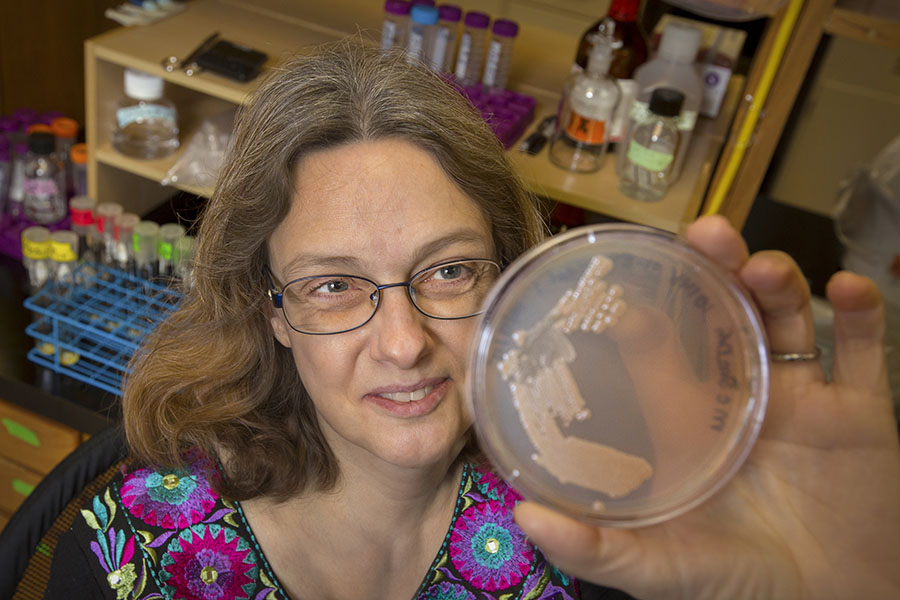
A team of biologists has put on their detective hats to investigate the complicated bacterium behind citrus greening, a problematic plant disease that has felled citrus orchards across Florida and threatened the Sunshine State’s once prosperous orange crop production.
One problem: The bacteria that causes citrus greening — Liberibacter asiaticus — won’t grow in a lab, rendering it almost impossible to study.
Enter Associate Professor of Biological Science Kathryn Jones and postdoctoral researcher Marta Sena-Vélez. The two scientists designed a plan of attack to understand this bacterium.
In a study published in the journal Applied and Environmental Microbiology, Jones and Sena-Vélez turned to a close relative of Liberibacter asiaticus called Liberacter cresens to see what information they could glean from this sister bacteria to explain citrus greening. The new research explains why these bacteria samples may be so difficult to grow in the lab and how to blunt the conditions creating that inhospitable atmosphere.
“The overall goal is to learn how to culture the bacteria causing citrus greening in the lab,” Jones said. “It’s been impossible thus far, so we are trying to learn as much as we can from a model bacterium and use that to understand the mechanisms behind citrus greening disease.”
Though Liberacter cresens can be cultured, it grows slowly and requires careful maintenance. The researchers diligently monitored the bacteria samples, interested in any possible insight into how it grows or what it does to the environment around it.
That’s where the science took an unexpected left turn.
As they ran tests on the growing bacteria, Jones and Sena-Vélez found that the samples were changing the environment around them and then dying off.
The bacteria were cultured in a neutral water-based solution, measured on the pH scale as 7. In chemistry, water-based solutions that measure less than 7 are considered acidic; measurements at more than 7 are alkaline.
The alkaline conditions poisoned the bacteria, thus halting the culturing process.
“We did not expect this result at all,” Jones said. “When I heard what was happening, I did a double take. It’s a very extreme reaction, demonstrating just how intricate these bacteria are. But what’s also important here is it will help us understand Liberacter asiaticus.”
Velez said researchers will explore improvements to the media they use to grow the bacteria to get a better sense of how to improve the culturing process. Ultimately, they will use what they’ve learned in this process to attempt to culture the bacteria that directly causes citrus greening. In their study, Jones and Sena-Vélez lay out modifications to the samples that allowed for continued growth.
“Citrus greening is such a serious issue for Florida, so even incremental steps really can make a big difference in the overall work to understand this disease,” Sena-Vélez said.
Orange production in the United States has steadily dropped over the last decade, plummeting from 7.98 million tons in the 2007 season to 2.2 million tons in 2018. Most of these losses have occurred in Florida because of citrus greening.
This work is funded by a grant from the U.S. Department of Agriculture. Other contributors to the study are FSU Professor of Mathematics Nick Cogan, graduate student Manu Aggarwal and lab technician Sean Holland; and University of Florida Professor Dean Gabriel and research scientist Mukesh Jain.




